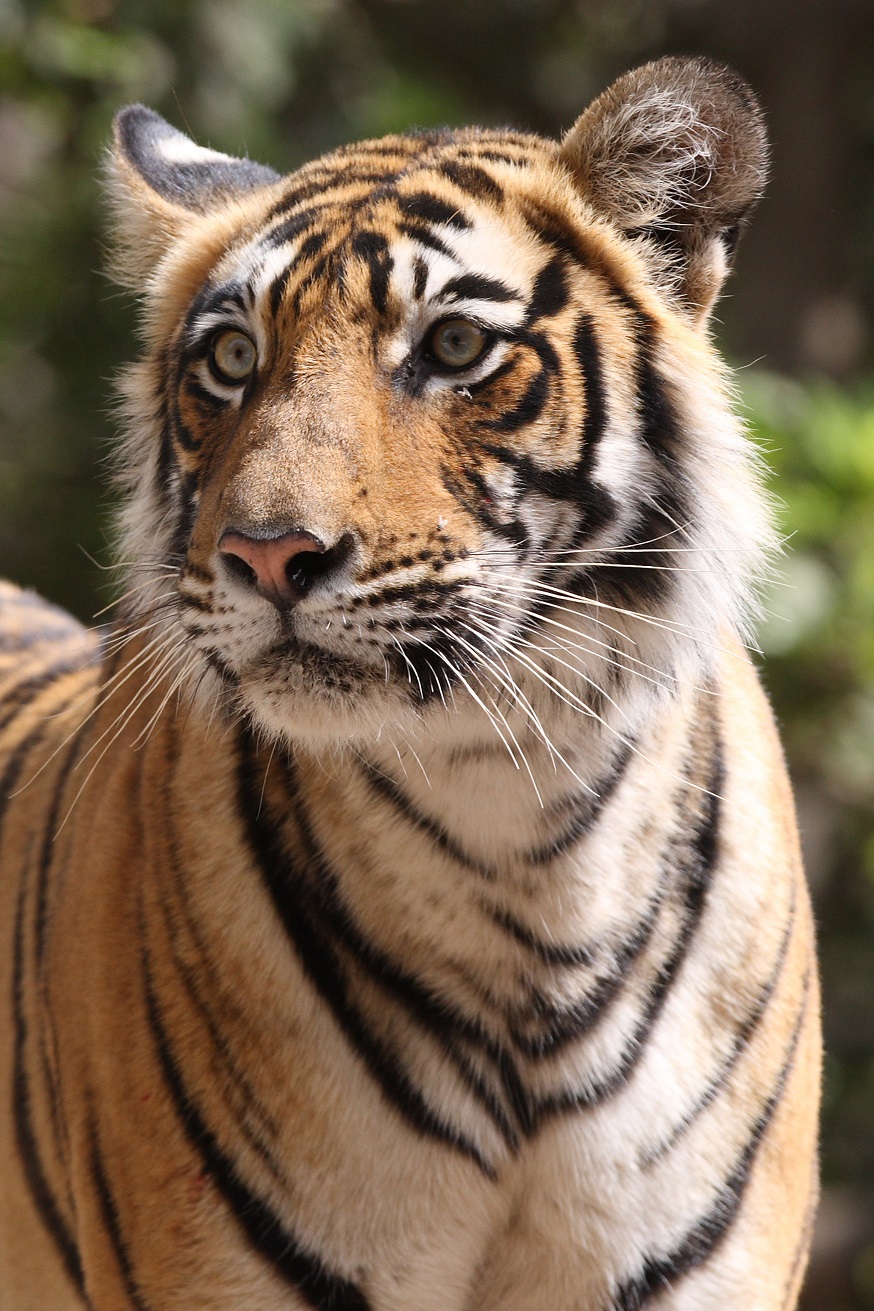Despite some welcome good news, tigers continue to be seriously impacted by illegal trade
Global Tiger Day 2020 was celebrated around the world on Wednesday and saw a string of tiger-focused stories emerge from Asia, many of them encouraging, such as increases in wild tiger numbers in South Asia and signs of wild tiger presence in an area of western Thailand where they had not been seen for years.
Nonetheless, illegal killing for their body parts continues to be a serious threat to the survival of wild tigers and efforts to eliminate this trade continue, in many cases, to be insufficient.
Publicly reported seizures of tiger parts from illegal trade represent one of the best sources of information available, although very far from perfect. Such seizure data may be affected by variables including effort and awareness among law enforcement, media interest and political sensitivities. Much illegal trade is not intercepted; not all seizures are widely reported and an absence of reported seizures does not mean an absence of trade.
To gain a more comprehensive picture of illegal trade, seizure data should be looked at alongside data on offers of tiger parts for sale on social media or in physical markets.
Nevertheless, much can be gleaned from looking into seizure data. With these caveats in mind, this week I took a dive into a database of seizure incidents compiled by EIA, derived from media sources, court records, government agencies and reports by Education for Nature Vietnam, Fauna and Flora International, Freeland, NABU, TRAFFIC, Wildlife Conservation Nepal, Wildlife Conservation Society, Wildlife Friends Foundation Thailand, Wildlife Protection Society of India (WPSI), Wildlife Trust of India, WildTiger and WildTeam, along with analyses produced by TRAFFIC and WPSI.
As might be expected from the region which is home to the majority of the world’s wild tigers, South Asia is well represented in trade data. Trade networks that transport body parts of wild tigers from Bangladesh, Bhutan, India and Nepal to buyers in western China and beyond have long been recognised as a serious threat to the species; a minimum of 1,067 tigers have been seized since 2000 across this region. Poaching and trade continues to impact wild tigers in South Asia: at least 177 tigers have been poached or seized in India since 2016 alone, according to WPSI.
As another prominent hotspot of illegal tiger trade, trade routes across the Mekong region (comprising Cambodia, Laos, Thailand and Vietnam) are similarly prominent in seizure data. At least 698 tigers have been seized in these countries – or in China but reported as having come from these countries – since 2000, a figure that dwarfs the number of wild tigers surviving in the region.
 This is almost certainly a huge underestimate of the true scale of trade, given the extinction of wild tigers in Cambodia, Laos and Vietnam, major discrepancies in the numbers of tigers held in tiger farms in Laos which remain unaccounted for and the huge volumes of tiger parts our investigators see offered for sale by Vietnamese traders on social media every day.
This is almost certainly a huge underestimate of the true scale of trade, given the extinction of wild tigers in Cambodia, Laos and Vietnam, major discrepancies in the numbers of tigers held in tiger farms in Laos which remain unaccounted for and the huge volumes of tiger parts our investigators see offered for sale by Vietnamese traders on social media every day.
As much as reported seizures can be a source of valuable – although limited – information on tiger trafficking, so too can a lack of seizures tell a story. It is striking to note that while at least 17 tiger seizure incidents were reported in Vietnam between January 2019 and January 2020 – of which five had reportedly come from or through Laos – we have no records of tiger seizures in Laos since 2018, despite prevalence of ongoing trade. Evidently, despite years of pressure and threats of sanctions under the Convention on International Trade in Endangered Species (CITES), enforcement against illegal tiger trade in Laos continues to be woeful.
Consider also the fact that total reported seizures in Myanmar since 2000 involve only four tigers, yet the dataset compiled by EIA records the seizures of 49 tigers in China which reportedly came from or travelled through Myanmar in the period 2001-19. This indicates a persistent lack of enforcement of wildlife laws in the country. In this context of lax regulation, plans to allow commercial breeding of tigers in zoos in Myanmar should be viewed with extreme caution.
Other tiger range states continue to be hugely impacted by poaching and illegal trade. At least 287 tigers have been seized in Indonesia since 2000, with at least 15 incidents reported since 2019 alone. Malaysia, where a minimum of 106 tigers have been seized since 2000 and at least four incidents reported since 2019, is facing a grave poaching crisis, with tigers being killed both in targeted operations and by indiscriminate snaring that imperils much of the country’s wildlife.
Siberian tigers – found in Russia’s Far East and part of the China-Russia border region – are similarly affected by poaching. Since 2000, a minimum of 121 tigers have been seized either in Russia or in China with Russia as the reported origin. Moreover, I have noted a string of news reports in 2020 so far of seizures of tiger parts reportedly from Russia. These have included 209 tiger bones seized on the Russia-China border in May, along with 200 horns of saiga antelope; the conviction of a Vietnamese national in Russia after they attempted to transport a tiger tooth to Seoul, reported in July; and a tiger skin and bones intercepted in Eastern China in June which had reportedly been purchased in Russia eight years previously.
As the primary source of demand for tiger parts and products, it is no surprise to find that seizure data shows China as an area of convergence for multiple tiger trade routes, from South Asia, South-East Asia and Russia. It is striking that of the minimum 259 tigers seized in China since 2000, more than half (at least 146) were clearly linked to illegal international trade, a figure which once again discredits the supposition that the Chinese Government’s policies of encouraging commercial breeding of tigers has relieved pressure on wild populations, either in China or in other countries.
It must be recognised that support for commercial use of threatened species is far from a majority position in China; 2020 has seen some significant changes in China’s wildlife policy, including a ban on farming and trade of most terrestrial wild animal species for consumption as food. Meanwhile, calls for greater restrictions on wildlife trade and a shift away from policies built on exploitation have been heard from a wide range of Chinese society, including academics, medical experts, NGOs and lawmakers.
Yet it is a stretch to claim that reported increases in wild tiger numbers in China tell the same story as successes in South Asia. Increases in wild tigers anywhere are good news and we should celebrate the hard work of Chinese conservationists towards securing a future for the species in the wild. But when evaluating the situation in 2020, it must be borne in mind that in China, we’re talking of an increase from a baseline as low as single figures: the most recent IUCN assessment estimated China’s wild tigers to number between seven and 20.
And as recently as 2007, the Chinese Government was claiming that Bengal tigers persisted in Tibet and Indochinese tigers in the south of the country (although acknowledging no presence could be confirmed of the endemic South China tiger in the wild).
Such claims have quietly ceased as China’s only wild tigers today are in the far north-east, derived from populations spilling over the Russian border. The loss of tigers throughout the rest of China is testament to the failure of the Government to genuinely commit to reducing demand for tiger products.
In an era of increasingly bleak environmental news, it is crucial that we celebrate successes, including signs of recovery among wild tigers in parts of their range, but that must not mean a loss of resolve elsewhere.
We are a very long way from seeing wild tigers restored as apex predators across their natural range and we must all work to support tiger range states emulate the good practice in South Asia to pave the way for more widespread recovery.







